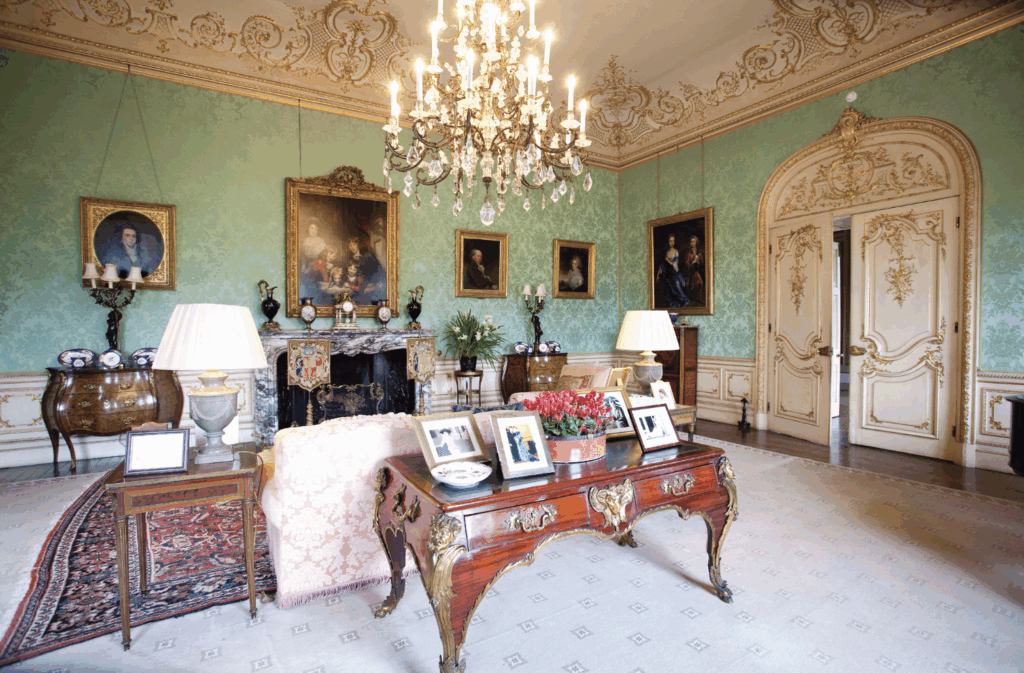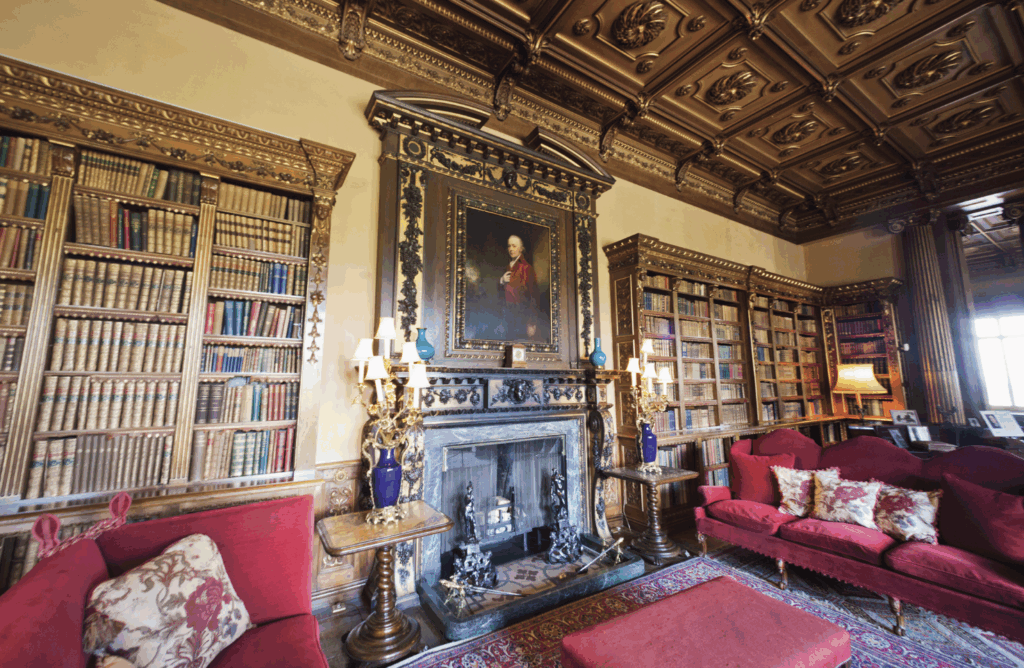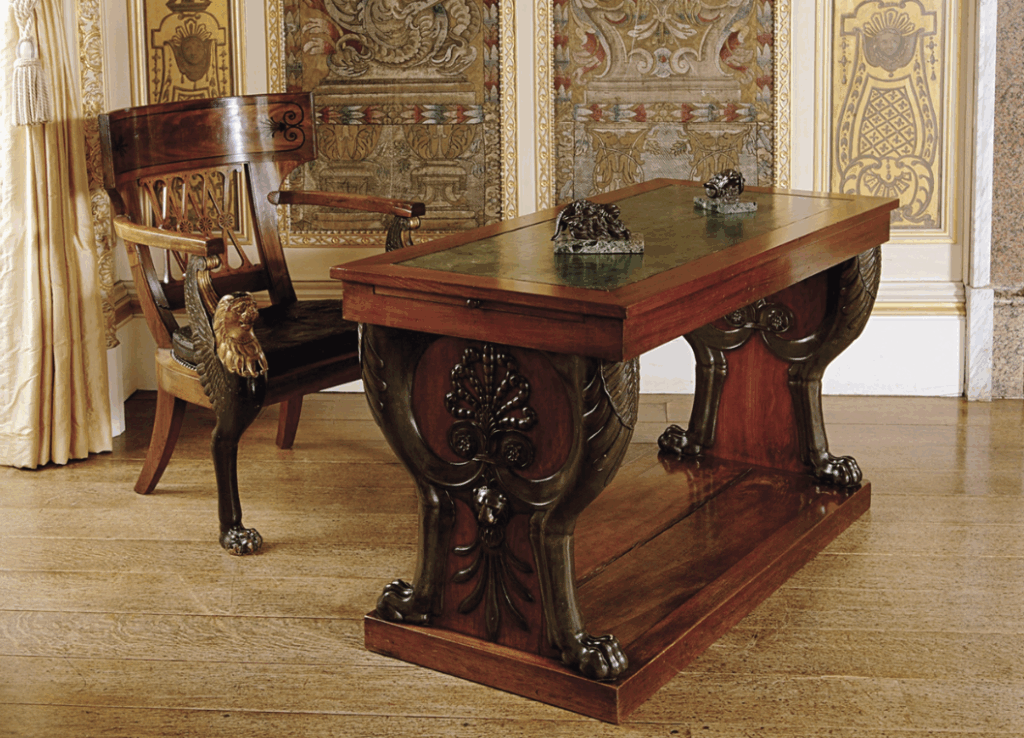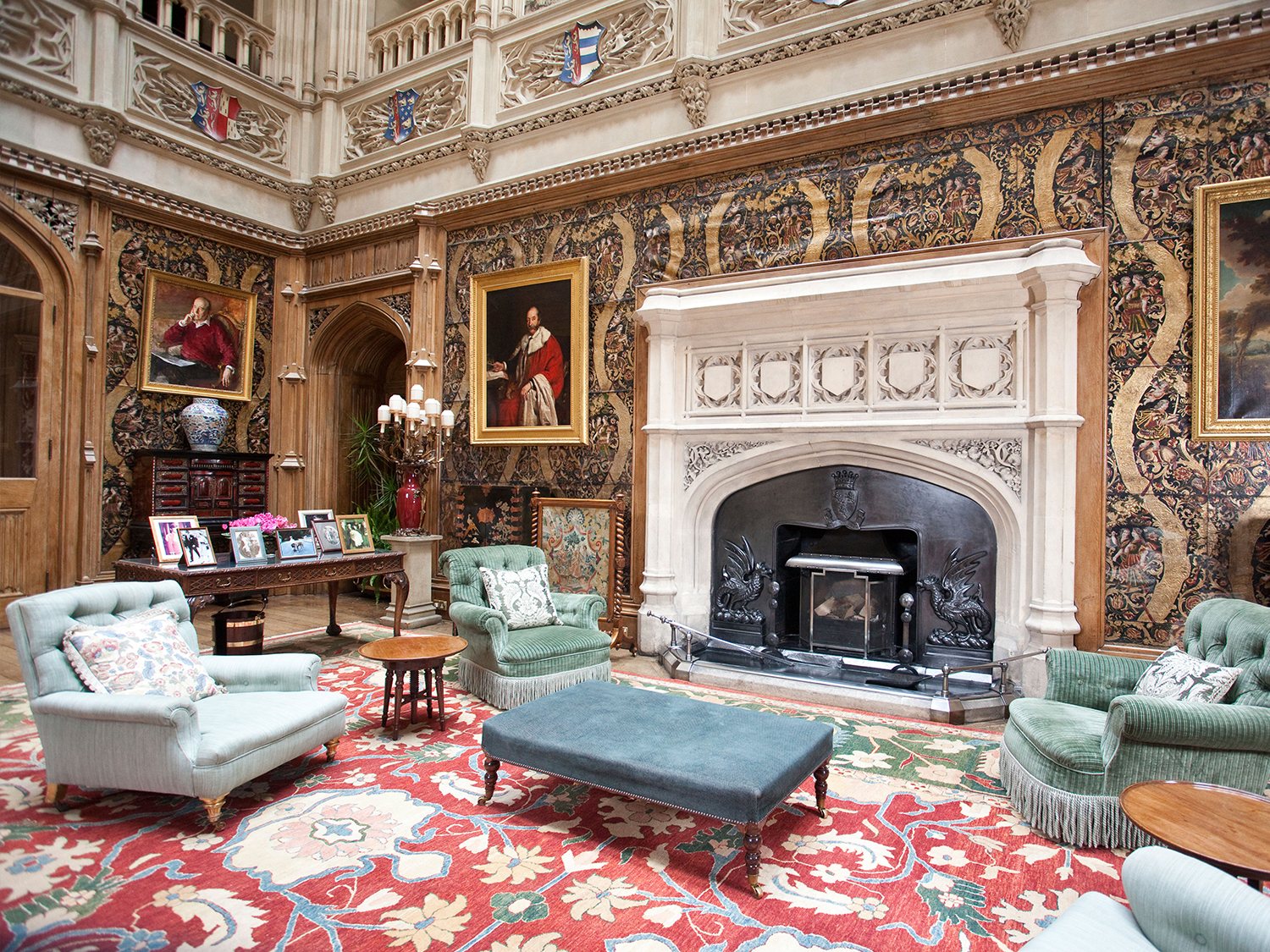Highclere Castle, the distinctive setting of popular TV show Downton Abbey, is more than just a picturesque backdrop for a beloved television series. For enthusiasts of antiques and history alike, a visit to this magnificent estate offers a rare opportunity to step into a world where every room is adorned with period pieces that narrate the tale of its grand past.

The castle, currently owned by the 8th Earl and Countess of Carnarvon, is situated on 6,000 acres and located one hour west of London in the heart of Hampshire. The original structure was built in the 17th century, however, in the 1840’s the 3rd Earl of Carnarvon engaged the architect Sir Charles Barry to remodel it into its existing state. Barry was renowned for being the architect of the Houses of Parliament, and he re-designed the castle in a Jacobethan and Italianate style. The exterior features the golden-hue stone of Bath and the interiors contain over 200 rooms filled with period furniture, warm carpets, historic portraits, antique porcelain, a collection of Egyptian antiquities, and more.
THE SALOON
With its soaring 50-foot ceiling, the saloon serves as the grand entrance to Highclere Castle. Its walls are covered in 16th century embossed leather, brought over from Cordoba, Spain, by the 3rd Earl of Carnarvon. Dating from 1661, the leather was carefully painted, gilded and embossed before being brought to Highclere and partly trimmed to fit the space.
THE GREAT OAK STAIRCASE
The staircase is a magnificent feature of the castle, requiring nearly a year to carve and install from December 1861 to October 1862. Hanging near the bottom of the staircase is an 18th century Belgian tapestry depicting the story of Meleager.

Photo: Jeff Gilbert / Alamy
THE DRAWING ROOM
The drawing room is decorated in the opulence of the Rococo revival style, featuring French green silk wall hangings, inspired by those in the Palace of Versailles. A notable portrait in the room is by Sir William Beechey, depicting the children of the first Earl of Carnarvon, above the mantelpiece.

THE LIBRARY
Designed by the renowned architect Thomas Allom, the library houses over 5,600 books with the earliest dating from the 16th century. Also in this room is a George III Carlton House desk, distinctive for its U-shape arrangement of drawers.

THE MUSIC ROOM
The music room is decorated with Italian embroideries and a baroque ceiling which was painted in the 1730s by Francis Hayman. However, one of the most impressive pieces of history in this room, and one which was removed for safekeeping when Downton Abbey was filming, is a desk and chair by Jacob-Frères that once belonged to Napoleon Bonaparte. Under the arm of the chair is the date 1802 and the letter ‘C’ meaning that it was made when Napoleon was Consul, before crowning himself Emperor in 1804. Napoleon took the desk and chair with him into exile on the Island of St Helena after his defeat at Waterloo and it was acquired by the 3rd Earl of Carnarvon in 1821, after Napoleon’s death.
THE DINING ROOM
The dining room is a veritable art gallery, showcasing several 17th and 18th century oil paintings hung in the salon-style. Among these masterpieces is Anthony van Dyck’s monumental equestrian portrait of Charles I on horseback, c.1635. Apparently, this painting was discovered by the estate sometime after the death of Lord Protector Oliver Cromwell in 1658, rolled up and being used to prop open a barn door. As Cromwell was one of 59 signers to the death warrant of King Charles I, it was not considered appropriate to pay homage to Charles I during Cromwell’s reign. Other significant paintings in this room include portraits of the first Earl and Countess of Carnarvon.
EGYPTIAN EXHIBITION
The 5th Earl of Carnarvon was a passionate explorer and collector who along with Howard Carter discovered the tomb of King Tutankhamen. Throughout his several expeditions to Egypt, he amassed a large collection of artifacts. However, after his death, the Countess, Lady Almina, had to sell much of it to pay the inheritance taxes. Today Highclere has an Egyptian exhibition in the cellars featuring a 3,500-year-old sarcophagus of a noblewoman, jewellery, pottery, hieroglyphic stones, carved sculptures, Ptolemaic coins, and many more.
Highclere Castle opens to the public seasonally and offers tours throughout the year.
By Madeleine Mackenzie, Head of Decorative Arts & Art, Sydney
Top Image: The Saloon entrance hall, Highclere Castle, England. Photo: Jeff Gilbert / Alamy
August 2025
